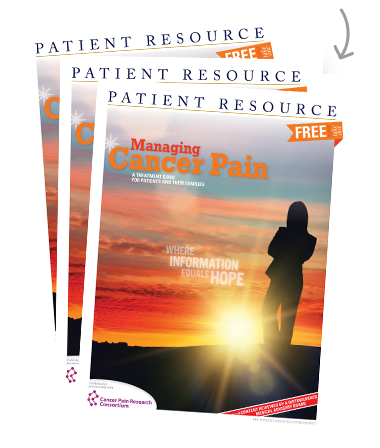Pain
Quality of life
There are times when a traditional cancer-fighting treatment may be used to shrink a tumor simply in order to improve a person’s quality of life. Radiation therapy, chemotherapy and surgery can be done in such instances to relieve or control cancer-related pain or other symptoms. This treatment is referred to as palliative.
Radiation therapy
Palliative radiation therapy is effective for treating chronic cancer-related pain that has not been relieved by other methods. Palliative radiation therapy is most often used for two different reasons:
- Pain related to growth of a tumor – radiation is delivered to shrink a tumor that may be causing painful or disturbing symptoms.
- Pain related to spread of cancer to the bone – radiation is delivered to an area of the bone damaged by cancer to help relieve bone pain.
External-beam radiation therapy is the type of radiation most commonly used to treat cancer that has spread. With external-beam radiation therapy, high-energy X-rays are used to deliver radiation from a source outside the body. Another type of radiation therapy used for palliation is internal, with radiation delivered directly to a tumor through either radioactive medications (known as radiopharmaceuticals) or small radioactive beads. Radiopharmaceuticals travel through the body and target cancer that has spread to the bones. Radioactive beads are implanted in a tumor and are used more commonly in the setting of curative treatment.
Radiation therapy may cause a skin reaction in the area being treated. The skin may absorb small amounts of radiation, causing redness and irritation similar to that with a mild sunburn. These reactions are usually minor and will resolve on their own after treatment. Your doctor can prescribe a cream if the reaction is more severe. Other possible side effects relate to the body part being treated.
Chemotherapy
Some of the same chemotherapy drugs that are used to treat cancer are used with palliative chemotherapy. Palliative chemotherapy is usually given intravenously (through a vein in your arm) but may be given by mouth. The reason for using palliative chemotherapy is similar to that for palliative radiation therapy. Sometimes, by treating the growth and/or spread of the tumor, symptoms such as pain can improve.
It may take time for chemotherapy to shrink the tumor enough to relieve pain. In addition, as with all treatments, some potential risks should also be considered when thinking about palliative chemotherapy. Chemotherapy can cause side effects that can include nausea, vomiting and diarrhea. Talk to your doctor about the risks and benefits of chemotherapy drugs so you can help make a decision about whether this option is best for you.
Surgery
Your doctor may suggest palliative surgery to help manage your pain. Palliative surgery may be done to:
- Remove a tumor or part of a tumor that is causing pain because of where it is located.
- Repair an organ or tissues damaged by cancer.
- Prevent further damage, such as stabilizing the spine.
The risks of any surgical procedure include infection, internal bleeding, blood clots and interference with other organs. But these risks are rare with palliative surgery. Your doctor will select a surgical procedure that is the least invasive as possible. For example, some procedures can be done with an endoscope (a small instrument through which a camera and surgical instruments can be passed). Endoscopic surgery involves the use of smaller incisions than conventional surgery (open surgery), so recovery time may be shorter.
Understanding the goal
When palliative radiation therapy, chemotherapy or surgery is done for advanced cancer, it cannot cure the cancer. It is important to remember this so that you and your caregivers do not have unrealistic expectations. These palliative methods may not be right for every person with cancer, but they may be beneficial in controlling pain and other symptoms, and they may be right for you.
Considering the options
Radiation therapy, chemotherapy and surgery can affect your quality of life and have risks as well as benefits. It is essential that you talk with your doctor openly about what you can expect from one of these options. Don’t be afraid to ask questions (see list at left). It’s important for you to know if the benefits will outweigh the risks. If one of these palliative methods is not an option, ask your doctor about other approaches to controlling your symptoms.
Questions to ask your medical team
Palliative radiation therapy
- How likely is it that the radiation will shrink the tumor causing my pain? If the tumor does shrink, how long will it be before it starts to grow again?
- How many radiation treatments will I need?
- What side effects can I expect from the radiation?
Palliative chemotherapy
- How likely is it that chemotherapy will shrink the tumor causing pain? If the tumor does shrink, how long will it be before it starts to grow again?
- How long will treatment last?
- What side effects can I expect from the chemotherapy drug?
Palliative surgery
- How complicated is the surgery?
- How long will my recovery be?
- What risks are associated with this type of surgery?



